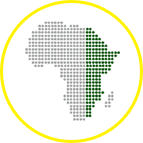The Institute publishes books, research reports, research papers, briefings and meeting reports in a range of formats. Publications cover policy, research, arts, culture and local knowledge in the countries of eastern and central Africa. Research publications—books, reports and papers—are peer-reviewed. Some RVI publications are also available in French and/or Arabic. Blogs can be read here.
The RVI is a signatory of the Budapest Open Access Initiative (2001); all publications are free for download in PDF format under Creative Commons licences. Print versions of most books and reports, and digital versions in Kindle and other specialist formats, are available for sale from Amazon and other online retailers, and from selected bookstores. Proceeds from sales are allocated to the Institute’s Scholarship Fund, which provides support to researchers and activists from eastern and central Africa.
The views expressed in books and reports published by the RVI are those of the authors, not the Institute.
